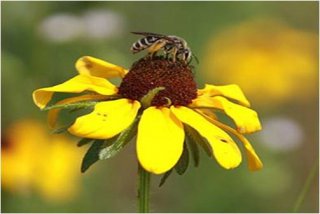Environmental Benefits of Green Infrastructure
Where site conditions allow, green infrastructure can be designed to soak water into the ground, which can increase the recharge rates of groundwater, helping to replenish groundwater reserves and maintain base stream flows.
Improves Water Quality. When stormwater falls on impervious surfaces such as asphalt and concrete, it can carry pollutants—including pathogens, nutrients, sediment, and heavy metals—to our streams, lakes, and beaches. Green infrastructure can be designed to capture and absorb stormwater and filter pollutants, which improves water quality. Green infrastructure can also help minimize the amount of stormwater that enters sewer systems, which can reduce combined sewer overflows in communities with a sewer system that carries both sewage and stormwater in the same pipe. View our EcoHealth Tool to see the relationship between a healthy urban ecosystem and water quality.
EPA resources:
- Green Infrastructure Permitting and Enforcement Series Factsheet 6: Water Quality Standards (pdf)
- Greening CSO Plans: Planning and Modeling Green Infrastructure for Combined Sewer Overflow (CSO) Control (pdf)
- Let It Grow: Build Your Urban Forest with Brownfields
Other resources:
- U.S. Department of Agriculture, Forest Service, Urban Forest Systems and Green Stormwater Infrastructure (pdf)
Reduces Localized Flooding. Localized flooding can occur when the volume of stormwater runoff exceeds the available volume in storm sewer pipes. Green infrastructure helps reduce localized flooding by capturing water from small, frequently occurring storm events and slowing down and temporarily storing stormwater. Green infrastructure is usually designed to absorb stormwater into the ground, further reducing the volume of stormwater entering pipes.
EPA resources:
Captures Water for Reuse. Communities can help conserve their potable water supply by installing green infrastructure that captures stormwater for reuse. Green infrastructure such as rainwater harvesting systems (e.g., rain barrels and cisterns) captures and stores rainwater so it can be used instead of valuable—and often scarce—potable water for things like outdoor irrigation or some indoor water needs.
EPA resources:
- Municipal Handbook: Rainwater Harvesting Policies (pdf)
- Rainwater Harvesting: Conservation, Credit, Codes, and Cost Literature Review and Case Studies (pdf)
Other resources:
Improves Air Quality. Green infrastructure often includes vegetation as a key part of its design. Trees and other vegetation improve air quality by directly filtering air pollutants and fine particulate matter. Vegetation also slows down temperature-dependent reactions that contribute to smog (i.e., ozone pollution). Air pollutants can cause respiratory illnesses, including chest pain, coughing, and aggravation of asthma. The increased shade and evaporative cooling (evapotranspiration) provided by trees and vegetation also lowers ambient temperatures and surface temperatures of impervious areas, which can reduce the amount of electricity needed for cooling and thus reduce pollutant emissions from power plants. These benefits are especially important to communities designated by EPA as nonattainment areas for the 8-hour ozone standard due to ground-level ozone and fine particulates in the ambient air.
EPA resources:
- Exploring the Link Between Green Infrastructure and Air Quality
- Estimating the Environmental Effects of Green Roofs: A Case Study in Kansas City, Missouri
- Recommendations for Constructing Roadside Vegetation Barriers to Improve Near-Road Air Quality
Other resources:
Reduces Heat Island Effect. Developed areas typically have a lot of surfaces that absorb, retain, and then release heat, which leads to these areas having higher temperatures compared to more rural, undeveloped areas. This is called the heat island effect. Trees, green roofs, and vegetation can help reduce heat island effects by shading surfaces, deflecting radiation from the sun, and releasing moisture into the atmosphere. Shaded surfaces, for example, may be 20 to 45 °F (11 to 25 °C) cooler than the peak temperatures of unshaded materials.1 For more details, visit our Green Infrastructure Heat Island webpage.
EPA resources:

Improves Habitat Connectivity. The vegetation in green infrastructure, even small patches like green roofs, provides habitat for birds, mammals, amphibians, reptiles, and insects—especially pollinators. By improving water quality, green infrastructure also improves habitat both in streams and in larger waterways and other connected aquatic areas. Interconnected parks, urban forests, habitat patches, and conserved areas help facilitate wildlife movement and connect wildlife populations between habitats, sustaining populations that cannot survive in reduced or isolated habitat. For example, learn how the state of New Jersey is partnering with dozens of organizations to achieve habitat connectivity across their state by providing land use analysis tools and guidance for habitat protection, restoration, and wildlife passage systems.
EPA resources:
- Green Infrastructure and Wildlife Conservation
- Going Wild: The Conservation Co-benefits of Green Infrastructure webcast
Other resources:
1 Akbari, H., D. Kurn, et al. (1997). Peak power and cooling energy savings of shade trees. Energy and Buildings 25: 139–148.
